SRAM brings 1x tech to the road - SRAM R1?
Forthcoming 1x11 road group spotted
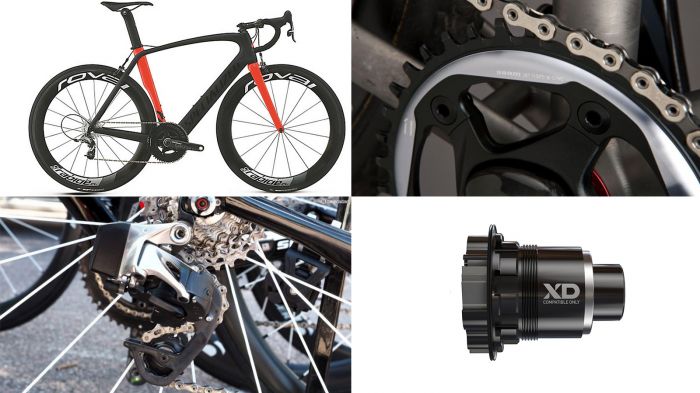
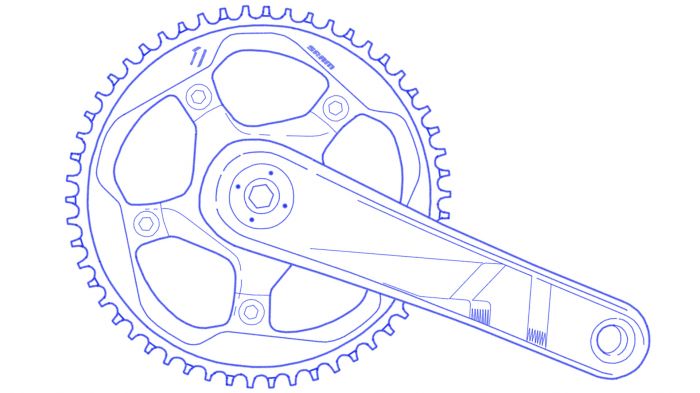
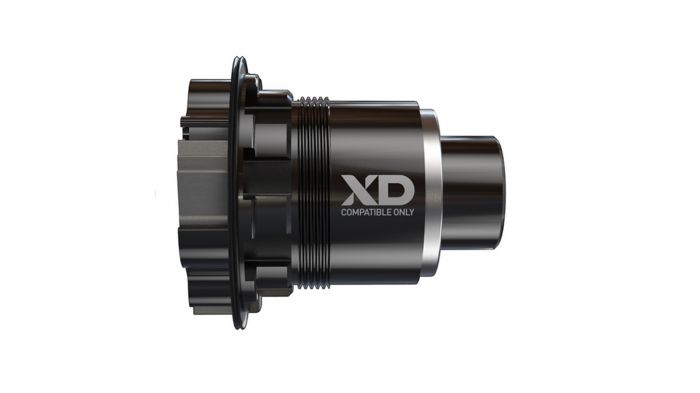
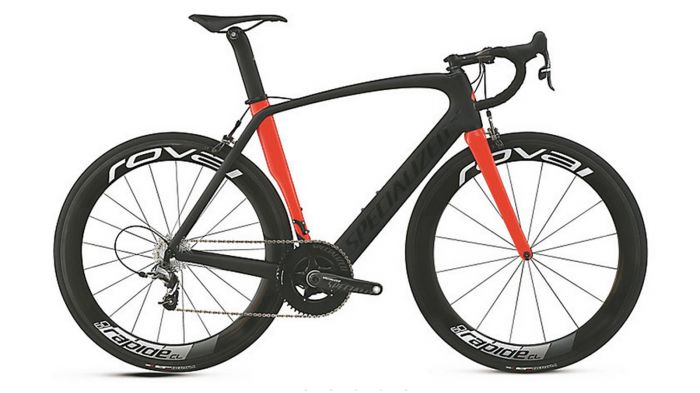
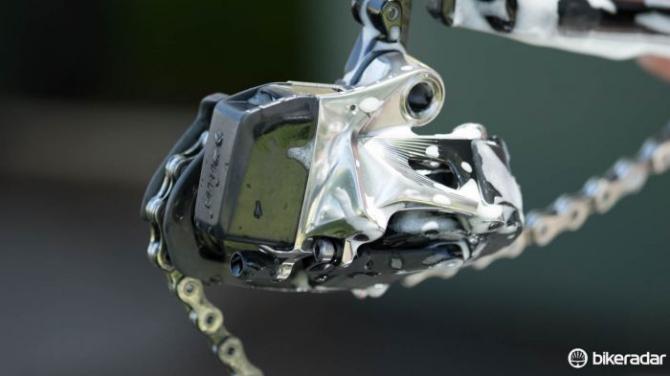
This article originally appeared on BikeRadar
SRAM's three 1x11 mountain bike groups and the CX1 cyclocross group have earned praise for their simplicity and durability – but how will a 1x11 drivetrain designed for the road be received? With prototypes already spotted, a SRAM 1x road group seems to be near production.
When SRAM introduced the CX1 group in early 2014 the company said it would pursue further applications for its 1x drivetrains. SRAM road product manager JP McCarthy said the company was keen to see how many types of bikes can be built with 1x drivetrains.
"We know that the 1x drivetrain has long legs — a lot of applications," McCarthy said last January, telling BikeRadar that commuting, time trialing/triathlon and fast lunch rides could all potentially benefit from the design.
It appears that a yet-to-be-named road group — perhaps SRAM R1 or RD1? — built around a single chainring is in the works. Herbert Krabel reported on Slowtwitch about pro triathlete Jordan Rapp's 2015 Dimond TT rig, which was built up with a clutch derailleur and a single front ring. Rapp declined to allow BikeRadar to use his photos, but you can still see them on Slowtwitch.
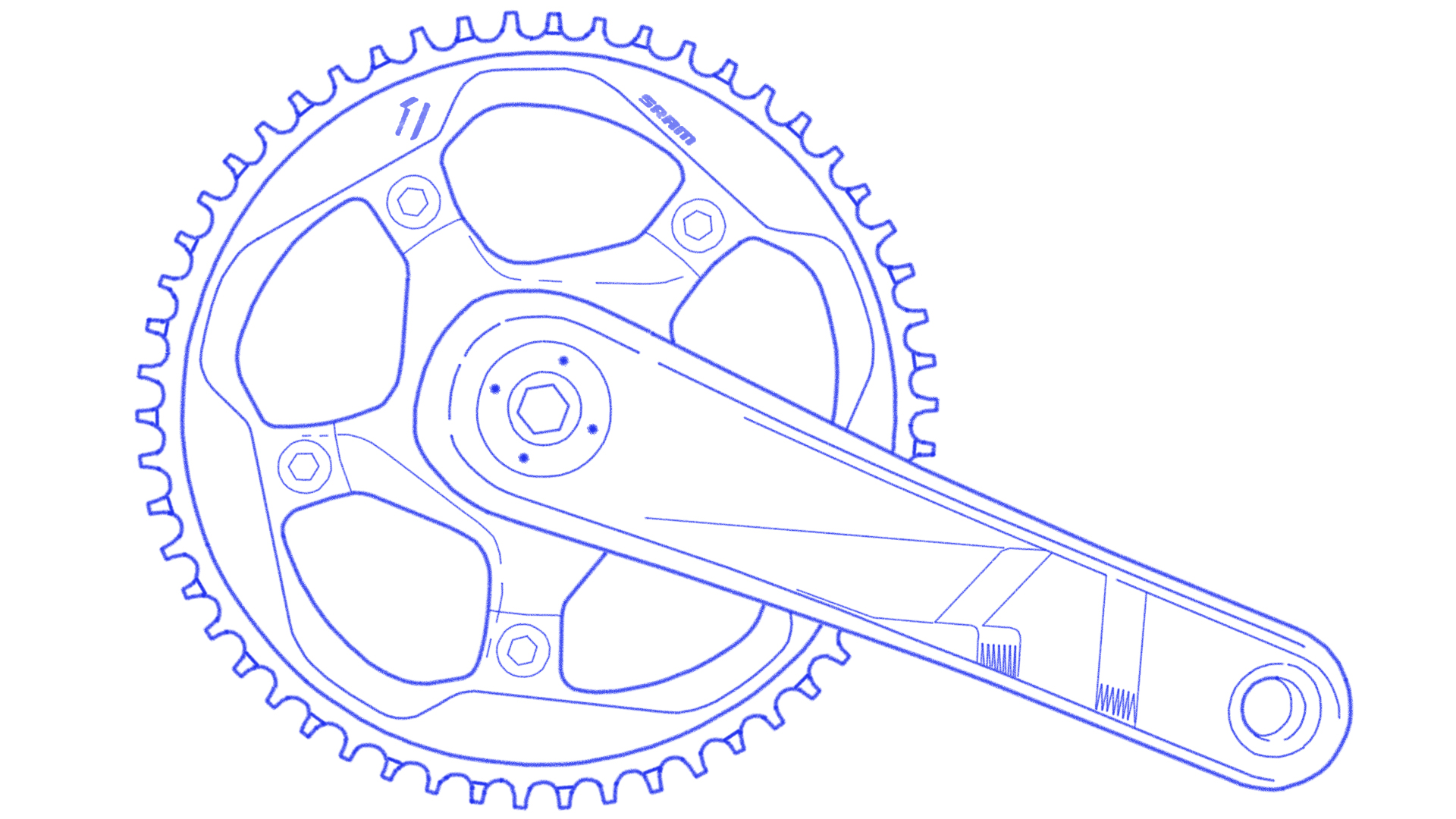
Jordan Rapp declined to let us use the photos of his bike posted on Slowtwitch, so here is a rendering of his prototype 1x road ring with a wide-narrow chainring
Rapp's set-up appears to use an existing CX1 rear derailleur with a road-specific SRAM 1x-branded 54T front chainring (the largest currently available SRAM CX1 ring is 46T). As with SRAM's other 1x drivetrains, this road-going group uses SRAM's X-SYNC chainring design with alternating thick and thin tooth profiles that more precisely mate up with the chain's outer and inner plates. This tighter interface between the chain and chainring reduces chain slop, making it very difficult to drop a chain when there isn't a front derailleur present.
Get The Leadout Newsletter
The latest race content, interviews, features, reviews and expert buying guides, direct to your inbox!
As with CX1, it appears riders are currently limited to the use of SRAM's existing 11-speed cassettes. Based on the inclusion of an optional XD driver body on the recently announced Zipp 303 Firecrest Disc and 202 Firecrest Disc, riders will have quite a diverse selection of compatible ratios right out of the gate with more road-specific combinations expected to follow.
All of SRAM's 1x mountain groups feature the XD body, whose unique shape is notable in that it allows for a tiny 10T cog. SRAM claims the XD driver design also provides a stiffer interface between the hub and cassette, which would result in increased shifting precision. And of course, the 10T cog would also provide a much wider total gear range than would normally be available with a conventional 11T — a crucial piece of the puzzle when considering any single-ring drivetrain.
Meanwhile, riders who typically don't need a lot of range (like triathletes, TT riders, and those living in flatter regions) but are more concerned about maintaining closer gaps between cassette cogs would still be able to use existing 11-speed road cassettes.
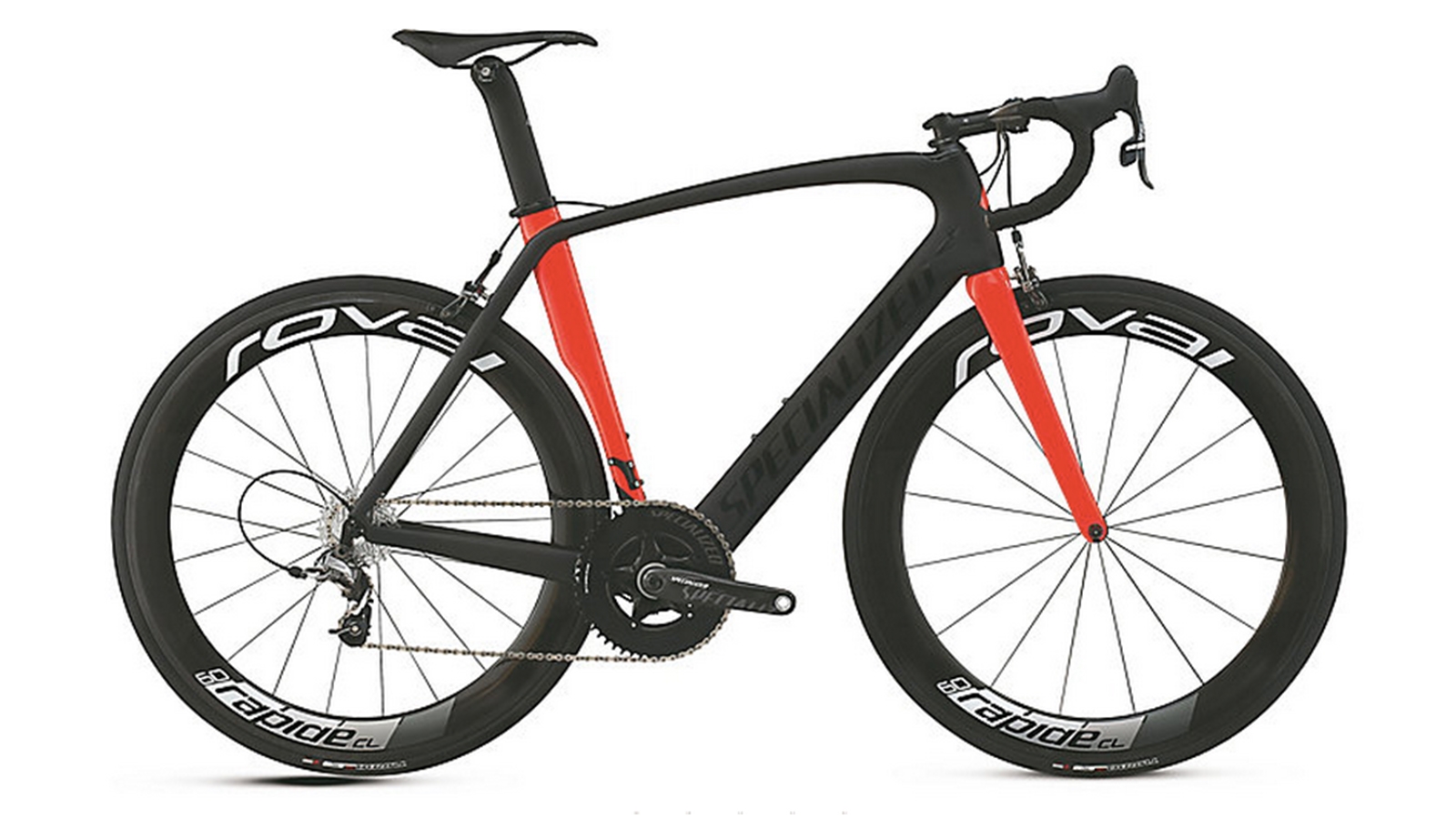
A SRAM 1x production road bike already exists in the Specialized Venge Lunch Ride, but that machine just uses a standard SRAM Force derailleur with a single 52t chainring and CX1 levers. We suspect this year you will see road and TT/Tri rigs with a SRAM clutch derailleur.
What about electronics and hydraulics?
While this 1x11 drivetrain is clearly mechanical, it's not out of the realm of possibility that SRAM will also launch an electronic version at some point. In fact, text from SRAM's patent application for its wireless group specifically mentions a 1x-compatible setup, making it very possible that we’ll see this as an option for the road as well as cyclocross, assuming SRAM can elegantly fit the pulley cage clutch mechanism into the already-busy derailleur body design.
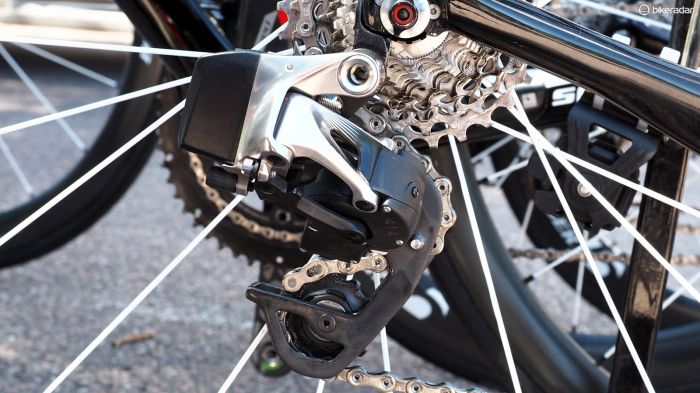
We've already spotted SRAM's 2x11 electronic road group in the pro peloton. It's very possible that there will be a wireless 1x group in the future as well
One could argue that the often difficult routing of cables on time trial and triathlon bikes makes them ideal candidates for ditching cables in favour of the wireless interface SRAM is using for its forthcoming electronic group.
We expect that SRAM could use programmable buttons on brake levers, allowing the rider to shift up with one hand and down with the other.
As for hydraulics, SRAM already has the Hydro R disc brakes and road levers, including the CX1 set-up with brake-only left lever. And Rapp, again commenting on Slowtwitch, said "SRAM should have TT levers for their very minimal hydro brakes sometime this year."
Benefits and potential drawbacks to a 1x road group
SRAM will likely claim that using a 1x design for time trials and triathlons could have an aero benefit by ditching the front derailleur and one of the chainrings. With the extra weight of the clutch derailleur, an overall weight saving would likely be minimal at best, but there could be marginal gains.
As with the other systems, the simplicity of a one-ring system could be a benefit, especially to new riders who would just have to contend with shifting one derailleur up and down. However, it could also come with some drawbacks, which could include increased shifting effort due to the clutch-equipped derailleur, and possible increases in friction resulting from the narrow-wide chainring design, particularly in cross-chain situations.
Also, 1x groups definitely affect gear choice, either in narrowing the total range or increasing the jumps between gears, since you have 11 increments instead of 22 with which to work.
SRAM's XX1 cassette has a whopping range of 10-42T cogs, but the jumps between the gears are as big as 20 percent.
Commenting on Slowtwitch, Rapp spoke of the gear issue, comparing his past triathlon course gear selection to what could be available with SRAM — including a 10-tooth cog.
"I've ridden basically every course I've ever done with 54/42-11/23 without issue. 54-11/30 is the same as 54/42-11/25. And I have an 11-28 as well. 54-11/28 is the same range as 54/42-11/21," Rapp wrote. "For most folks, I think the coming 10-tooth cassettes will be better. Then you'll see options like 50-10/30 or 48-10/32 that will really give you the range you'll need. But 10-tooth requires a different hub shell."
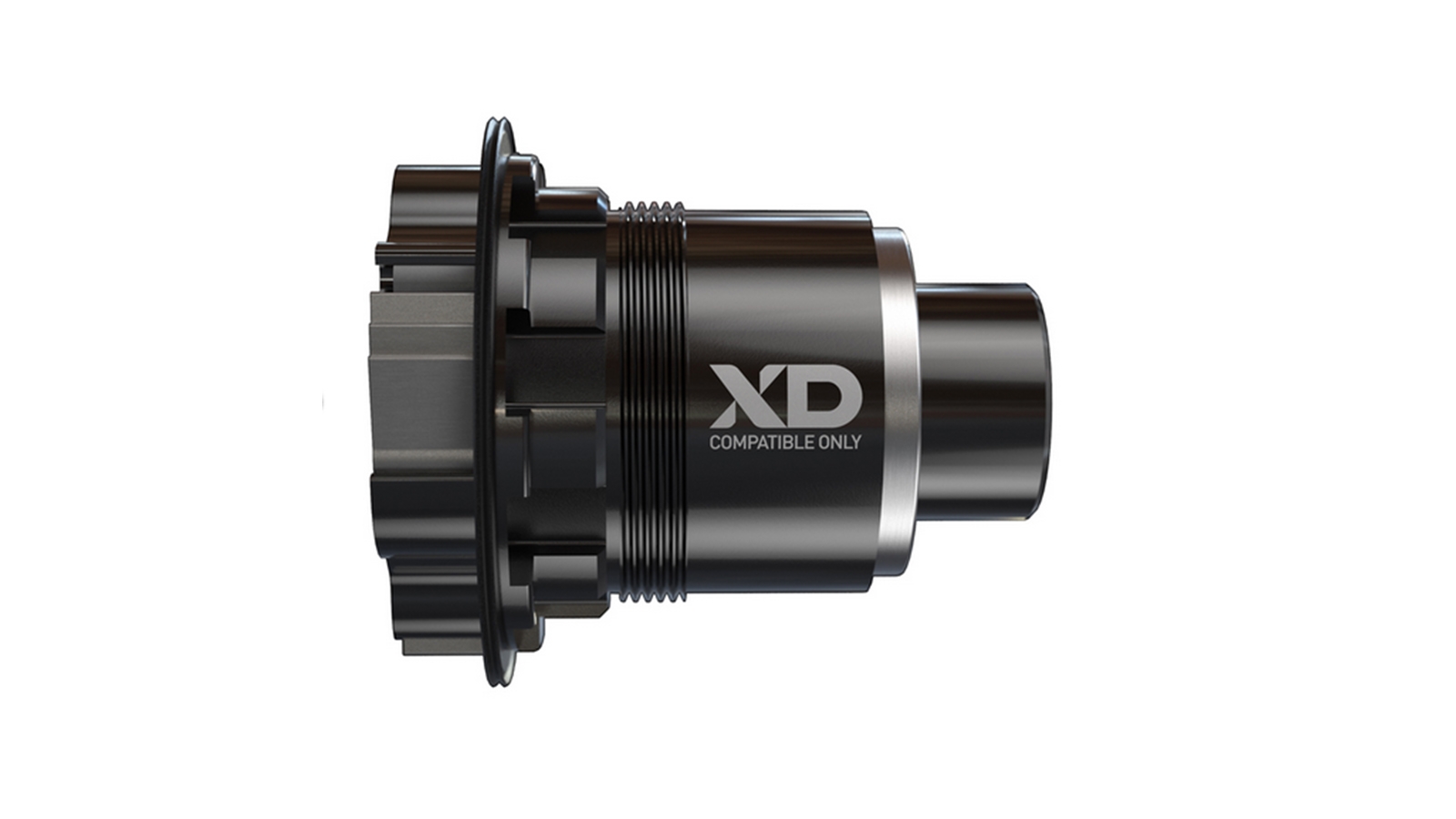
SRAM could incorporate the XD driver body used on its mountain 1x11 groups into the new design
Comparison of a 48x10-42 with double-chainring road configurations
For the sake of comparison, here is a gear-inches chart showing the end ranges of three standard double-ring road set-ups using an 11-28 cassette along with a 1x group using a 48t chainring and a 10-42 cassette. As you can see, the total range is roughly comparable, with the 1x group offering the lowest overall gear and nearly as large a top gear as the 53/39. The compromise, of course, would be the big leaps in between the gears. (BikeCalc.com has a handy calculator if you're considering changing your crankset and/or cassette configurations.) Time will tell whether a road 10-42 even happens, or if the cassette is something smaller.
BikeRadar asked SRAM a number of questions about the group, but the company declined to comment. Instead, we were just sent a black-and-white photo of Italian racing legend Fausto Coppi. His bike in the picture? A steel Bianchi — with a single chainring.
We'll bring you more information on the development of this group as it becomes available.